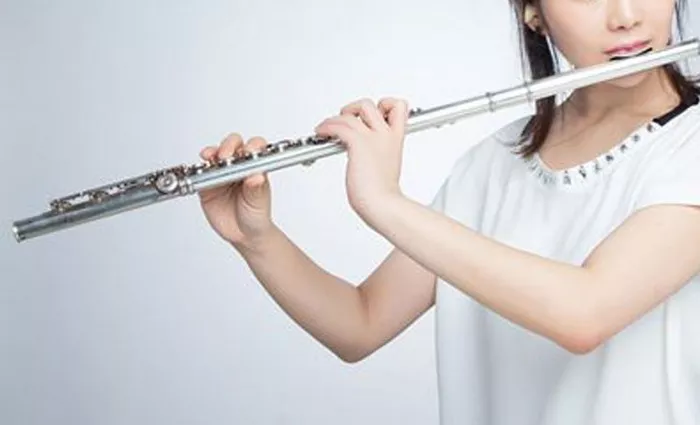The flute, with its enchanting and ethereal sound, is a versatile instrument that has found a place in a wide array of musical genres. From classical to contemporary, the flute’s unique timbre and expressive capabilities make it a valuable addition to diverse musical contexts. In this article, we will explore the multitude of genres where the flute has made its mark.
Classical Elegance: The Flute in Orchestral and Chamber Music
One of the most prominent genres where the flute has long been a staple is classical music. Whether as a solo instrument or as part of an ensemble, the flute’s agility and ability to convey delicate nuances have made it an integral component in orchestras and chamber groups. Renowned composers such as Mozart, Bach, and Debussy have composed timeless pieces that showcase the flute’s lyrical beauty and virtuosic potential.
In orchestral settings, the flute often takes on both solo and supporting roles, contributing to the overall texture of the music. Its bright and expressive tone is well-suited for conveying both joyous and melancholic sentiments, allowing the instrument to shine in a variety of classical compositions.
Jazz and Swing: The Flute Swings into the Limelight
The flute has also found a comfortable home in the vibrant world of jazz and swing. Jazz flautists, such as Hubert Laws and Herbie Mann, have played a pivotal role in expanding the instrument’s presence in this genre. The flute’s agility and ability to produce rapid runs and trills make it a perfect fit for the improvisational nature of jazz music.
In jazz ensembles, the flute often adds a distinct color to the sound palette, offering a refreshing contrast to traditional brass and reed instruments. Its light and breezy tone can evoke a sense of playfulness or introspection, depending on the context of the music. From swing to bebop, the flute’s versatility allows it to navigate the intricate and dynamic landscape of jazz with finesse.
World Music: The Global Flute
The flute has transcended cultural boundaries and become an integral part of world music. In various traditional and folk genres around the globe, different types of flutes are played, each contributing to the unique sonic tapestry of its respective culture. For example, the bamboo flute is a prominent instrument in traditional Indian music, while the pan flute is associated with South American folk traditions.
Flutes are often featured in ceremonies, rituals, and celebrations, reflecting the diverse cultural expressions of communities worldwide. The instrument’s ability to convey emotions and tell stories without words makes it a universal language in the rich tapestry of global musical traditions.
Contemporary and Popular Music: The Flute in Modern Contexts
Beyond its classical and traditional roots, the flute has carved out a niche in contemporary and popular music. In genres ranging from pop and rock to electronic and experimental, the flute has been embraced by artists seeking to add a distinctive and unexpected element to their sound.
In popular music, artists like Lizzo and Ian Anderson of Jethro Tull have prominently featured the flute, infusing their songs with a unique flair. The instrument’s ability to cut through dense arrangements and provide a melodic focal point has contributed to its increasing popularity in modern productions.
Film Scores: The Flute’s Cinematic Charm
The flute has left an indelible mark on the world of cinema through its frequent inclusion in film scores. Composers often turn to the flute to evoke a sense of nostalgia, romance, or mystery in movie soundtracks. The haunting melodies played on the flute can enhance the emotional impact of a scene and create a memorable sonic backdrop.
From the iconic theme of “The James Bond Theme” to the whimsical tunes of animated films, the flute has been an essential tool for composers to craft evocative and memorable musical moments on the silver screen. Its ability to convey a wide range of emotions makes it a versatile choice for enhancing the storytelling power of film.
Experimental and Avant-Garde: Pushing Boundaries with the Flute
In the realm of experimental and avant-garde music, the flute becomes a canvas for sonic exploration. Musicians and composers in this genre often push the boundaries of traditional playing techniques, utilizing extended techniques and unconventional approaches to create innovative sounds.
The flute’s versatility, coupled with its adaptability to unconventional playing methods, makes it a favorite choice for those exploring the fringes of musical expression. Its presence in experimental music showcases the instrument’s capacity to evolve and adapt to the ever-changing landscape of contemporary sound.
See Also: How to Play the C Scale on the Flute: A Step-By-Step Guide
In conclusion
The flute’s remarkable versatility allows it to seamlessly traverse a multitude of musical genres. From classical elegance to the rhythmic excitement of jazz, the flute’s ability to adapt and convey emotion has made it a cherished instrument across the musical spectrum. As musicians continue to push boundaries and explore new sonic territories, the flute remains a timeless and enduring presence in the world of music.


